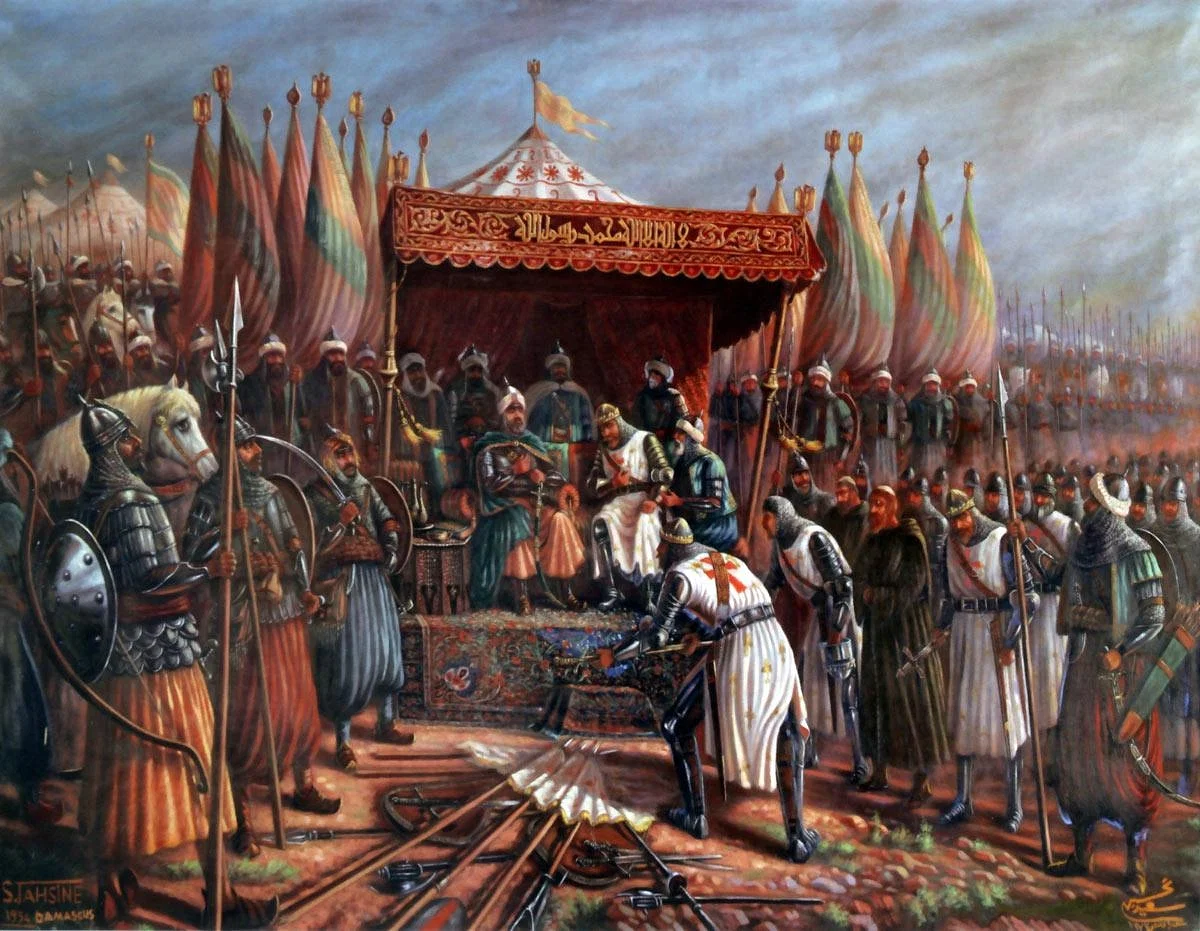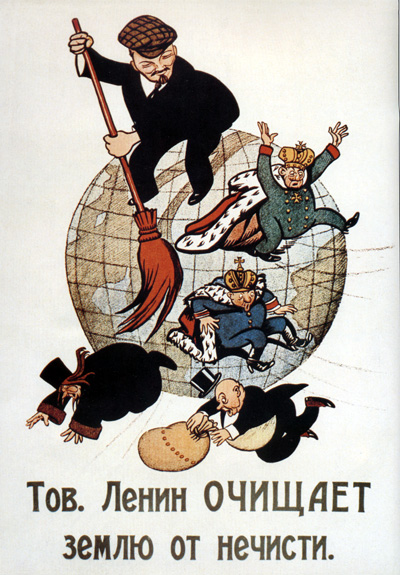Jerusalem, a holy city for the adherents of all three great Abrahamic religions (Judaism, Christianity, and Islam) was conquered by the armies of the First Crusade in 1099 CE. The Muslims failed to halt their advance, as they were themselves disunited and disorganized, but this was soon to change and the Holy City was to be retaken. Saladin (l. 1137-1193 CE), the Sultan of Egypt and Syria, who united the core of the Islamic Empire under his domain prepared to strike back. He utterly vanquished the Crusader field army at the Battle of Hattin, in 1187 CE, and took Jerusalem later that year. Saladin's triumph was, however, far less violent than that of the medieval knights of the First Crusade (1095-1099 CE), and for this, he has been endlessly romanticized by Muslims and Christians alike.
Prelude
The rise of the Seljuk Turks in the 11th century CE crushed the status quo established in Asia Minor. Most of Anatolia was lost to the steppe warriors who had come to settle in this pastureland from central Asia. In 1071 CE, the hope of restoring Byzantine authority over the region was shattered when a Byzantine army was crushed at the Battle of Manzikert.
Byzantine emperor Alexios I Komnenos (r. 1081-1118 CE) was determined to reverse the setbacks of his predecessors. He appealed the Papacy for assistance, probably seeking a mercenary force subject to his personal control, but the result was beyond his wildest imagination. Pope Urban II (r. 1088-1099 CE) used spiced-up and exaggerated tales (with a bit of accuracy) of the sufferings of their fellow Christians in the Holy Land, and preached a holy war against the "infidels" (Muslims), in return of which he offered complete plenary indulgence (remission of sins).
Stirred by the Pope's speech and motivated both by religious fervor and practical prospects, noblemen from all corners of Europe vowed to wrest the Holy Land from Muslim hands and embarked with armies on the First Crusade (1095-1099 CE) to the Levant. There they conquered Nicaea in 1097 CE (which was taken over by the Byzantines), Antioch, and Edessa in 1098 CE, and then proceeded to Jerusalem which fell in 1099 CE and was subjected to mass slaughter. The biggest shock to the Muslim world, however, resulted from the desecration of the Al Aqsa mosque, which was later converted to a church: the Temple Church.
Though lacking in strength to fight at that point, the Islamic front was preparing slowly and steadily to reclaim Jerusalem. The Islamic holy war or Jihad, long forgotten, was now revived for use against the Crusaders, and the standard was first raised by the Zengids (1127-1250 CE), a Turkish dynasty based in Mesopotamia and Syria. After the death of the second Zengid ruler, Nur ad-Din (l. 1118-1174 CE), the banner was taken up by his protégé: the Sultan of Egypt, Saladin (l. 1137-1193 CE). By 1187 CE, Saladin had spent over two decades of his life fighting the Crusaders, and it was this fateful year that would bring him the greatest triumph of his career.
Hostilities erupted between the two parties when a crusader knight, Reynald of Chatillon (l. c. 1125-1187 CE), attacked a Muslim trade caravan in defiance of the peace pact of 1185 CE put forward by his side. He imprisoned many, killed others, and when he was reminded of the pact, he mocked the Prophet Muhammad. In retaliation, the wrath of Saladin would engulf all that the Crusaders had achieved so far. On 4 July 1187 CE, the largest-ever Crusader army (although outnumbered by Saladin's forces) was crushed at the Battle of Hattin and the Holy Land lay undefended.
Taking the Levantine Coast
The pulverizing defeat at Hattin had left most of the Crusader strongholds without enough soldiers to defend them. And since the threat of a Crusader counterattack had vanished, Saladin scattered his forces to take the Levantine coast. The strongholds fell, mostly in an eventless manner; in many cases, local Muslim and Jewish populations rebelled and kicked the Crusader forces out, welcoming the Ayyubid armies to the undefended cities.
Tibnin fell, but it was Tyre that should have been the first target of Saladin; this tactical error returned to haunt him later on in the Third Crusade (1189-1192 CE). Crusaders, from all corners of the Latin Kingdom flocked to Tyre. After a failed attempt to negotiate a surrender of the city, Saladin moved towards Ascalon (the gateway to Egypt), taking Ramla, Ibelin, and Darum en route. Although the defenders were initially defiant, once Saladin besieged the city, they capitulated without a fight. Now, he sought to claim the most prized treasure of all, he knew it by no name other than Quds, the Holy City – Jerusalem.
At the Walls of the Holy City
Saladin wished not to delay taking the holy city lest this opportunity be lost, for he knew that the might of the whole Christendom would soon be set upon him. He met with delegates from the city outside Ascalon and offered generous terms of surrender. The delegates refused to accept this offer as well, stating that they would not surrender the city under any condition. Insulted, the Sultan decided to subject the Christians to the same fate the Muslim and Jewish residents of the city suffered in 1099 CE.
Amidst these troubled times, Balian of Ibelin (l. 1143-1193 CE), a French nobleman, who had escaped the field at Hattin, sought Saladin's favor and pleaded to be allowed to enter the city so that he could take his wife and children to Tyre. Saladin agreed to Balian's request under two conditions: first, he would stay in there for only one night, take his family and leave, and second, he would never raise his sword against the Sultan. But once inside the city, the French knight was recognized by the inhabitants and was urged to stay and defend Jerusalem. He wrote to Saladin, explaining his situation and requested safe conduct for his family. Not only did the Sultan comply with his request, but he also entertained his family members as guests and departed them with gifts and an armed escort, to Tyre.
The Ayyubid army, determined to storm and sack the city, marched confidently towards it under the leadership of the Sultan himself. Their flags were visible on the western side of Jerusalem on 20 September. Since Jerusalem was lacking severely on manpower, Balian had to knight several men (and even children), but even then, the citizens stood no chance in a direct assault, their main hope was to hold the walls.
As the siege commenced, the walls and the tower were showered with arrows and pelted with rocks hurled from catapults and mangonels; siege towers were sent forward to take the walls but were pushed back forces that sallied out of the gate. On 25 September, Saladin's siege force was positioned, ironically, at the spot from where the knights of the First Crusade had attacked the city 88 years ago. Indeed, this was an effective move, a breach was created in the wall just three days later by the Sultan's miners, and now the city could be assaulted.
The City Surrenders
Unable to defend the city any longer, Balian rode out to address the Sultan directly and offered a bloodless surrender of the city. But another problem had to be sorted; he had vowed to assault the city and could not step back from his word. He accepted surrender under one condition: Crusaders within the city were to be prisoners of war, they could ransom themselves or else be enslaved. The ransom was very generous, even for the standards of that time.
A period of 40 days was given for the residents to arrange for their ransom, but many failed to do so. Saladin's brother al-Adil, Balian of Ibelin, and many ameers (generals) of the Ayyubid army freed people on their own accord. As for Saladin himself, he announced that all elderly people, who could not afford their freedom were to be set free anyway.
The Sultan was also approached by a group of wailing women, who, upon inquiry, revealed themselves as dames and damsels of knights who had either been killed or held prisoners. They begged for the Sultan's mercy, and Saladin ordered for their husbands, if they were alive, to be released, and none of these women were enslaved. Saladin's kindness was later narrated in a praising manner by Balian's squire.
However, rich people, despite having the necessary resources, refused to pay for the poor. The patriarch, Heraclius did approach the Sultan to request the release of several hundred people but made no payment for anyone else.
Saladin himself entered the city on Friday, 2 October, which also happened to be 27th of Rejeb according to the Islamic calendar, the anniversary of the Prophet's night journey to the city. This, of course, was intentional; he wished to show the Muslim world that he was following in the footsteps of their ancestors.
The Aftermath
The Al Aqsa mosque was purified, and the Crusader cross was torn down from it. The building was washed and cleaned, adjacent buildings that had encroached over its area were taken down, so were the numerous Crusader artifacts placed within the mosque. Oriental carpets were placed inside, and perfumes were sprinkled over every corner of it. A pulpit, prepared under the orders of Saladin's patron Nur ad-Din (who had wished to reconquer the holy city himself, but did not live long enough to do so), was placed by the Sultan in the mosque, symbolizing the completion of his master's dream. After 88 years, the Friday prayer was held in the mosque in congregation.
Christian churches were converted to mosques, although native Christians such as the Eastern Orthodox and Copts were allowed to stay and worship freely within the city in return for the jiziya tax.
The fall of Jerusalem hit Europe like a shockwave. Many scholars, including William, the Archbishop of Tyre (l. 1130-1186 CE), considered Saladin as a form of divine punishment, others thought of him as a scourge. For the Muslims, however, this was the long-awaited success brought to them by their Sultan.
The Crusaders drew their field army from their strongholds, and with most of the Crusader army annihilated, nothing stood in the way of the Muslims. Tyre, the sole bastion of the Cross in the Holy Land, as noted earlier, became the center of resistance. Soon, a fraction of the remainder Crusader army, the ones who were not permitted inside Tyre, laid siege on Acre (1189-1191 CE). This was the stage for the arrival of the armies of the Third Crusade (1189-1192 CE) under Richard I of England (r. 1189-1199 CE) and Philip Augustus of France (r. 1180-1223 CE). Though parts of the Levantine coast were recovered by this expedition, Saladin's Jerusalem remained untouched.
Megathreads and spaces to hang out:
- 📀 Come listen to music and Watch movies with your fellow Hexbears nerd, in Cy.tube
- 🔥 Read and talk about a current topics in the News Megathread
- ⚔ Come talk in the New Weekly PoC thread
- ✨ Talk with fellow Trans comrades in the New Weekly Trans thread
- 👊 Share your gains and goals with your comrades in the New Weekly Improvement thread
reminders:
- 💚 You nerds can join specific comms to see posts about all sorts of topics
- 💙 Hexbear’s algorithm prioritizes comments over upbears
- 💜 Sorting by new you nerd
- 🌈 If you ever want to make your own megathread, you can reserve a spot here nerd
- 🐶 Join the unofficial Hexbear-adjacent Mastodon instance toots.matapacos.dog
Links To Resources (Aid and Theory):
Aid:
Theory:


Relationship stuff
In the immediate aftermath of my confession/apology text to my crush things gotten back to something of a cordial friendship. Things had been cooling off for a few weeks before and I had already kind of accepted that maybe a relationship wasn't going to happen. I sent her another text that was more in line with the ones I had usually been sending her a few days later and got no response or mention of it (she had gotten in the habit of at least letting me know she saw my text late) I decided it was probably best to just let things settle down between us for a while.I still wanted to put myself out there so I jumped back on the dating apps and even did a speed dating event. But none of it really felt right. I barely got matches and the ones that I did never really built up to much. The speed dating was cool, but aside from one person that I vibed with right off the bat it just felt so, meh. Unfortunately we didn't really connect much after the event so it kind of ended up being another dead end.
So I spent a couple weeks kind of just accepting that maybe I'm just going to be single for a while. And maybe a part of it is the fact that I don't really connect with people all that often. And while I did feel a really strong sense of attachment I couldn't really blame my attachment to my crush for my situation since I've gotten attached to multiple crushes at the same time in the past.
Then things started turning a bit. One day I was dropping off something to be picked up at work and my crush happened to be the one passing by to do a pick up. She was asking one of my coworkers about something, but they didn't respond. She jokingly looks down and says "wow, so he's just going to ignore me. Not surprising since no one loves me." And I look at her laughing and reply "hey, that's not true" and she starts giggling as she walks away. Things start to lighten up between us, but I'm still more or less managing my expectations.
About a week later she's out sick for a few days and I'm thinking... well we're at the very least friends, so let me at least send her a text to check up on her. This is after we haven't texted for the better part of a month. I didn't really expect her to answer, but she did and we ended up chatting for a bit. When she's back at work she keeps her distance since she still isn't feeling 100%. Then a few days later I get sick. I get into a bit of a jam with coverage so I end up having to work. I mask up and keep my distance from people and luckily it turns out its not covid. But on the day I'm working solo I get swamped with work and don't have much of a chance to go get lunch and she tell me she would have gotten me something if I had told her. Before I could thank her someone calls with some more work related stuff.
A few days after I run into her as she's leaving with a friend and she says "love you". It caught me a bit off guard so I didn't really say anything back aside from "take care". Its not the first time she's said that to me, but the tone was a bit different. A few days later when I come in she runs into me and says "oh hey, I was just thinking about you." And I'm a bit flustered at first So I kind of joke around with her about it.
So I kind of joke around with her about it.
And now she's doing the thing she used to do when she'd pass by the room where I work and stare at me
Sooooo... yeah. I might just be back on the roller coaster